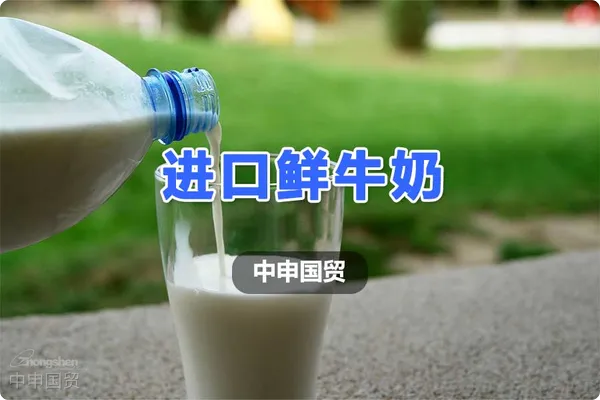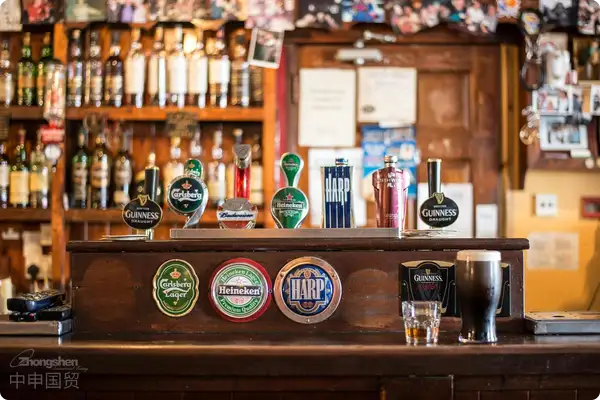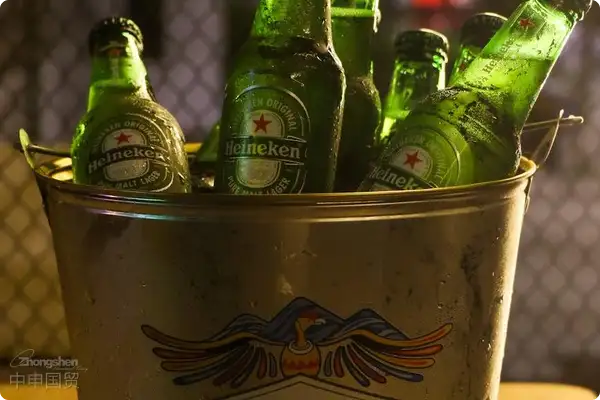- Shanghai Zhongshen International Trade Co., Ltd. - Two decades of trade agency expertise.
- Service Hotline: 139 1787 2118
Have you ever thought about how fresh milk from a distant region passes through layers of checkpoints and smoothly reaches the Shanghai market when we buy it in the supermarket? The process of milk import is not just about transportation. It involves strict laws, regulations and complex customs clearance procedures. This article will introduce in detail the process of importing Canadian fresh milk into Shanghai, helping importers understand and successfully complete this process.
I. Guidelines for Importing Dairy Products and Dairy Beverages into Shanghai
To import fresh milk into Shanghai, it is first necessary to understand and follow the relevant regulations and guidelines for dairy products and dairy beverages in Shanghai. These guidelines are designed to ensure the safety and quality of imported products and protect the health of consumers.
Necessary Documents and Certificates
Copy of the Product Manufacturers Registration Certificate:Issued by the competent authority of the food origin, it certifies that the manufacturer is registered and complies with production standards.
Certificate of Supply:Issued by the manufacturer, it certifies that it is the direct supplier of the product. A production flow chart should be attached, detailing the production equipment and heat treatment methods.
Quality Test Report of Production Water:Including the content of coliforms and free residual chlorine to ensure the hygiene standards of production water.
Chemical Composition Test Report of the Product:Showing the main components and nutritional value of milk.
Microbiological Quality Test Report of the Product:Ensure that the product does not contain harmful microorganisms and complies with hygiene standards.
Product Shelf Life Declaration:The manufacturer needs to clearly state the shelf life of the product.
Samples of the products empty containers:Provide samples of empty containers for inspection.
Complete and clear pictures of the product packaging:The pictures should clearly show the brand, product name, ingredients, heat treatment method, manufacturers name and address, importers name and address.
Certificate of Heat Treatment and Hygiene Conditions:Issued by the competent authority of the foods place of origin, it certifies that the product has undergone appropriate heat treatment and has been handled, processed, and packaged under satisfactory hygiene conditions.

II. Handling Process of Goods Arriving at the Port
Before fresh Canadian milk arrives in Shanghai, the importer needs to ensure that all documents and supporting materials are complete and meet the requirements of relevant laws and regulations in Shanghai. The following is the detailed processing procedure:
(I) Application and Approval
The importer needs to obtain approval from the Food and Environmental Hygiene Department and ensure that all conditions are met. This is a prerequisite for importing milk into Shanghai.
(II) Inspection and Sampling for Testing after the Goods Arrive at the Port
Preliminary Inspection:After the goods arrive at the port, they need to be inspected by the Food and Environmental Hygiene Department to ensure that the goods are consistent with the declared information.
Sampling for Testing:When necessary, the Food and Environmental Hygiene Department will take samples of the milk drinks that have arrived for testing. The inspection and testing include microbiological testing, chemical composition testing, etc., to ensure the safety and quality of the product.
Result Handling:If the inspection and testing results are qualified, the Food and Environmental Hygiene Department will issue a Goods Release Note to the importer, allowing the goods to be released. If they are unqualified, the goods will be refused entry or need to be rectified.
III. Customs Clearance and Declaration Process
After completing the above steps, the importer needs to carry out the formal customs declaration process. This step is crucial to ensure that all declared information is accurate.
(I) Prepare Customs Declaration Materials
Commercial Invoice:List the value and quantity of the goods in detail.
Packing List:Describe the specific contents of each packing box.
Bill of Lading:List the contents of each box of goods in detail.
The contract signed by both the buyer and the seller, clarifying the rights and obligations of both parties.Define the rights and obligations of the buyer and the seller.
Foreign Exchange Payment Voucher:Prove that the payment for the goods has been made.
Insurance Policy:Cargo transportation insurance policy.
Other necessary supporting documents:Such as certificate of origin, inspection certificate, etc.
(2) Electronic declaration
The importer needs to declare through the Internet + Customs platform or other designated electronic systems, fill in and submit all necessary documents and information.
(3) Customs inspection
The customs will review the customs declaration materials and may conduct on - site inspections of the goods. Ensuring that all documents are consistent with the actual goods is the key to passing the inspection.
IV. Precautions and Summary
During the entire import process, there are several key points that require special attention:
Accuracy and completeness of documents:Ensure that all documents are accurate and comply with relevant regulations.
Advance preparation and communication:Prepare all necessary documents in advance and maintain close contact with the place of export and relevant departments.
Timely declaration and coordination:Ensure timely declaration and maintain good communication with the Food and Environmental Hygiene Department and the customs to respond to any unexpected situations.
Through the above - detailed process introduction, it is believed that importers can better understand and successfully complete the process of importing Canadian fresh milk into Shanghai. Ensuring that each step complies with relevant regulations can not only improve the customs clearance efficiency but also guarantee the safety and quality of products to meet market demands. It is hoped that this article can provide valuable guidance and reference for importers.
Related Recommendations
Contact Form
Category case
Contact Us
Email: service@sh-zhongshen.com
Related Recommendations
Contact via WeChat

? 2025. All Rights Reserved. 滬ICP備2023007705號-2  PSB Record: Shanghai No.31011502009912
PSB Record: Shanghai No.31011502009912









